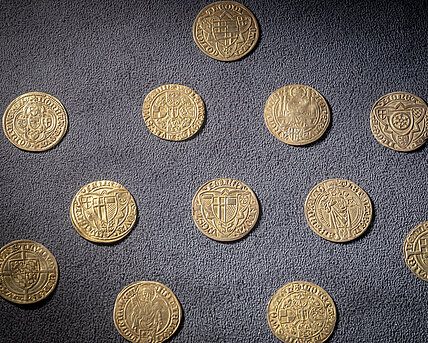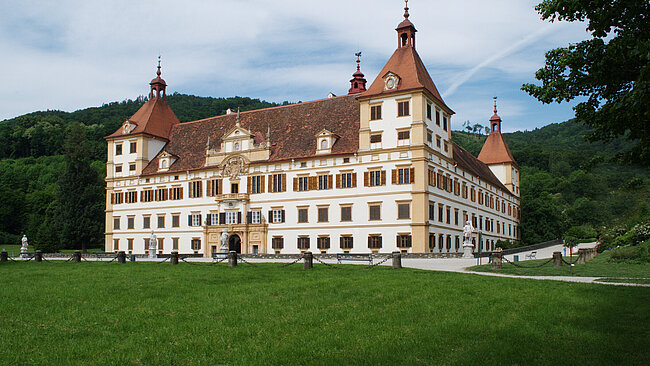Remarkable and historic coins from the magnificent panther thaler minted in Graz to the monetary crisiscausing schinderling groat, from the coined medallions of Flavia Solva to the pure Renaissance jewelled medallion of Archduke Karl II of Inner Austria: The numismatic collection of the Coin Cabinet at the Universalmuseum Joanneum has impressive stories to tell about the power and the powerlessness of money and has been thoroughly inspired by the location Schloss Eggenberg.
The origins of the coin collection at the Universalmuseum Joanneum go back to the times of Archduke Johann, who recorded in the statutes of the Joanneum in 1811 that ”coins of the country in all metals should be collected”. From these beginnings the numismatic collection has now grown to 70,000 objects, the Joanneum collection is one of the biggest private collections of coins in Austria and includes remarkable and magnificent coins minted in Graz as well as treasure finds and single discoveries from all parts of Austria. The Coin Cabinet collection that has been housed on the ground floor of Schloss Eggenberg since 1982 was closed in March 2006 because the presentation was no longer abreast of the latest in museum presentation techniques.




















![Exhibition view of the Coin Cabinet [Translate to English:] Ansicht Dauerausstellung Münzkabinett Schloss Eggenberg](/fileadmin/_processed_/0/c/csm_Muenzkabinett_Dauerausstellung_2023_09_520bb11bbd.jpg)

